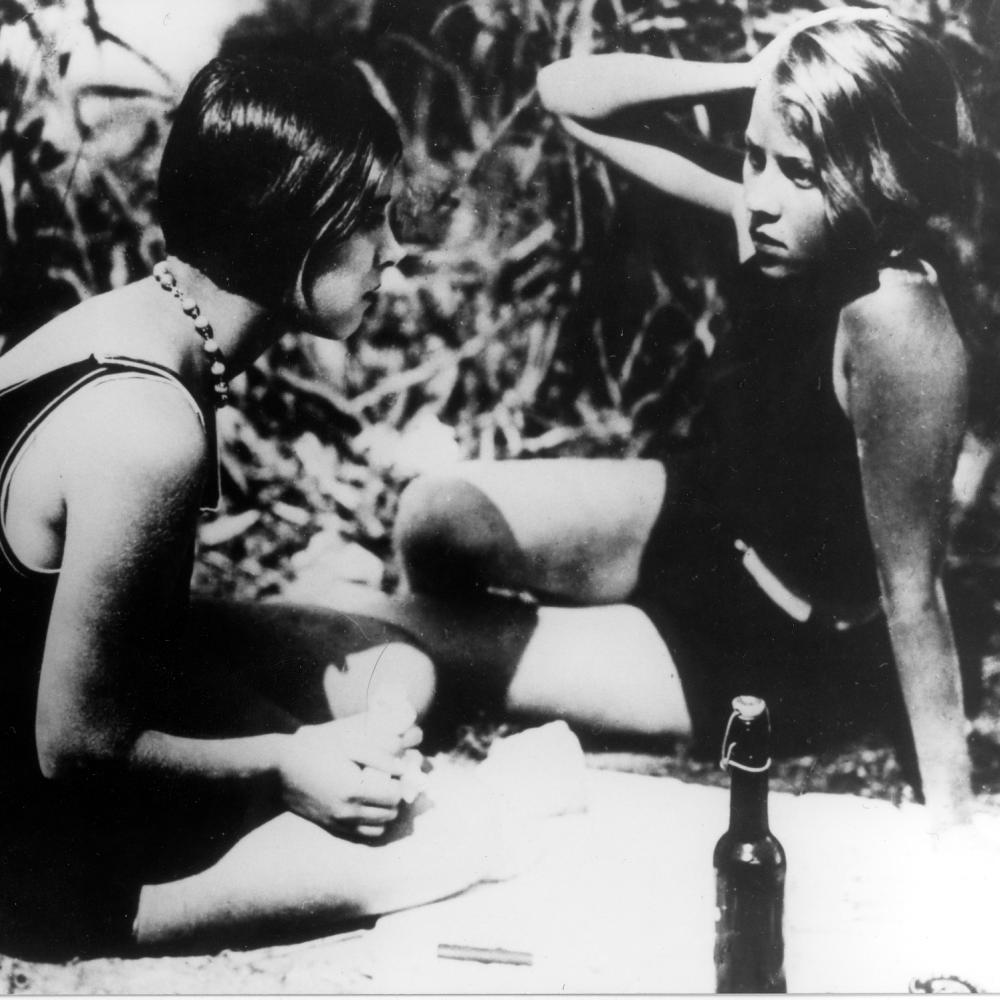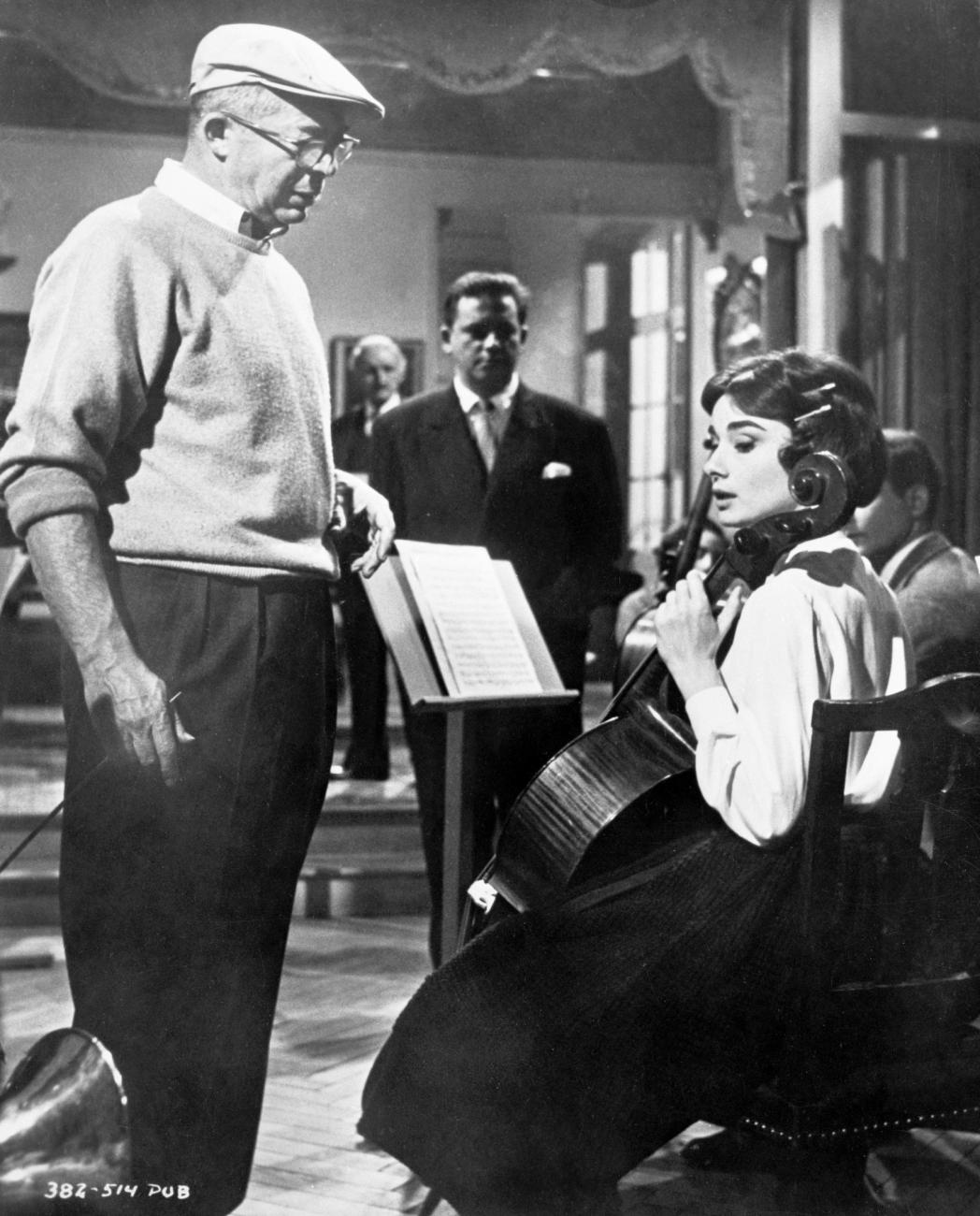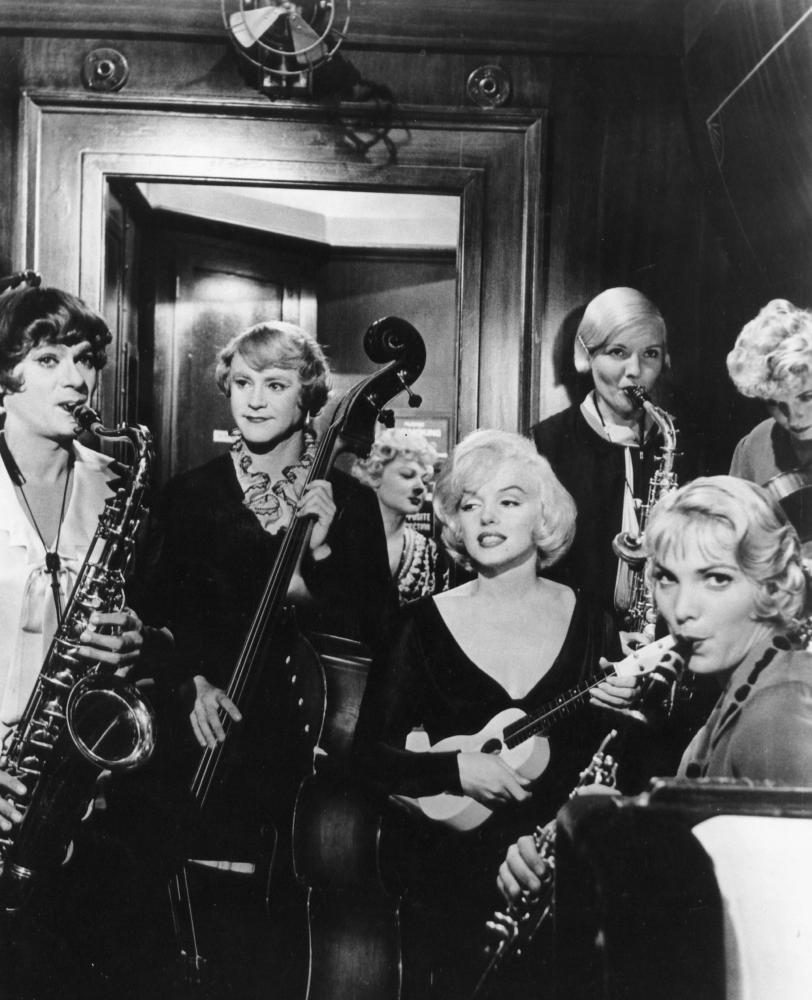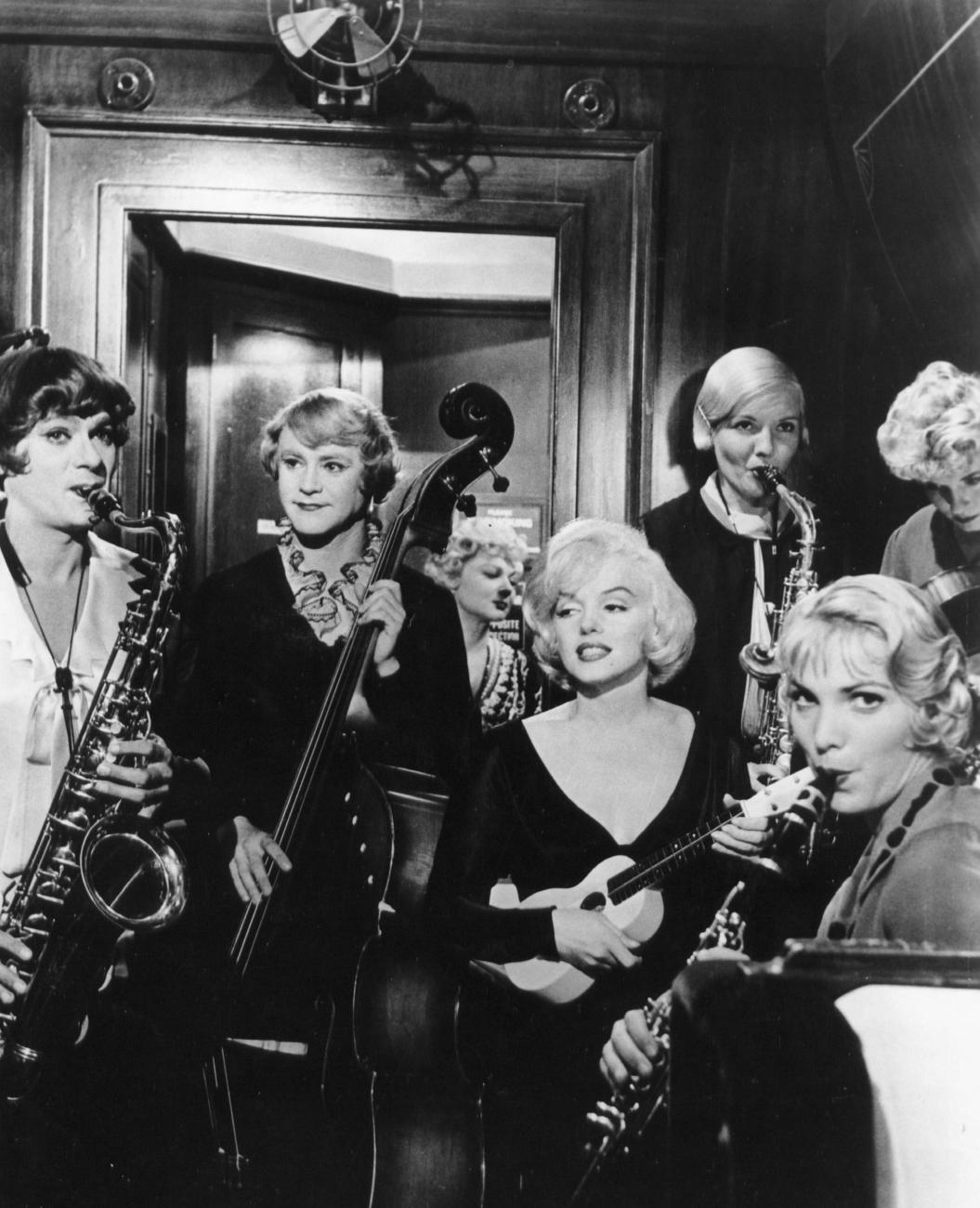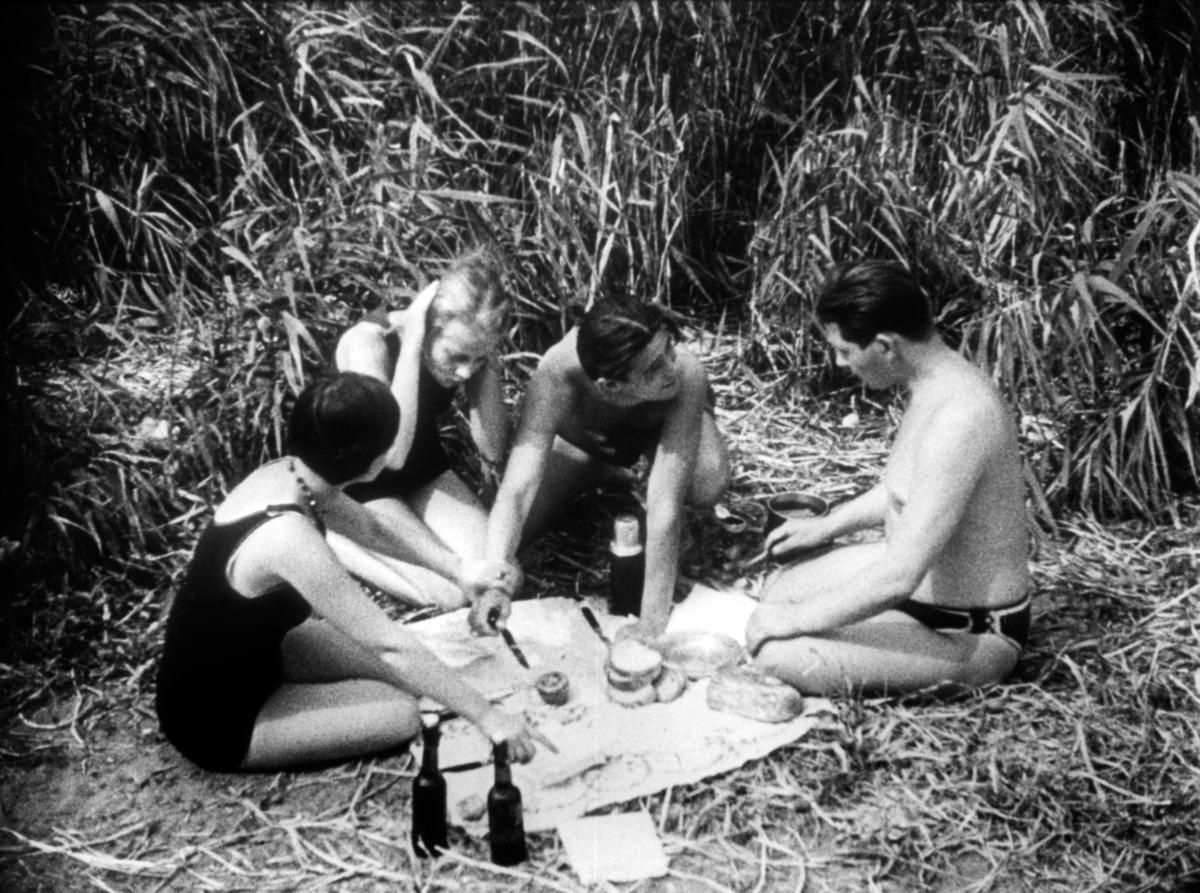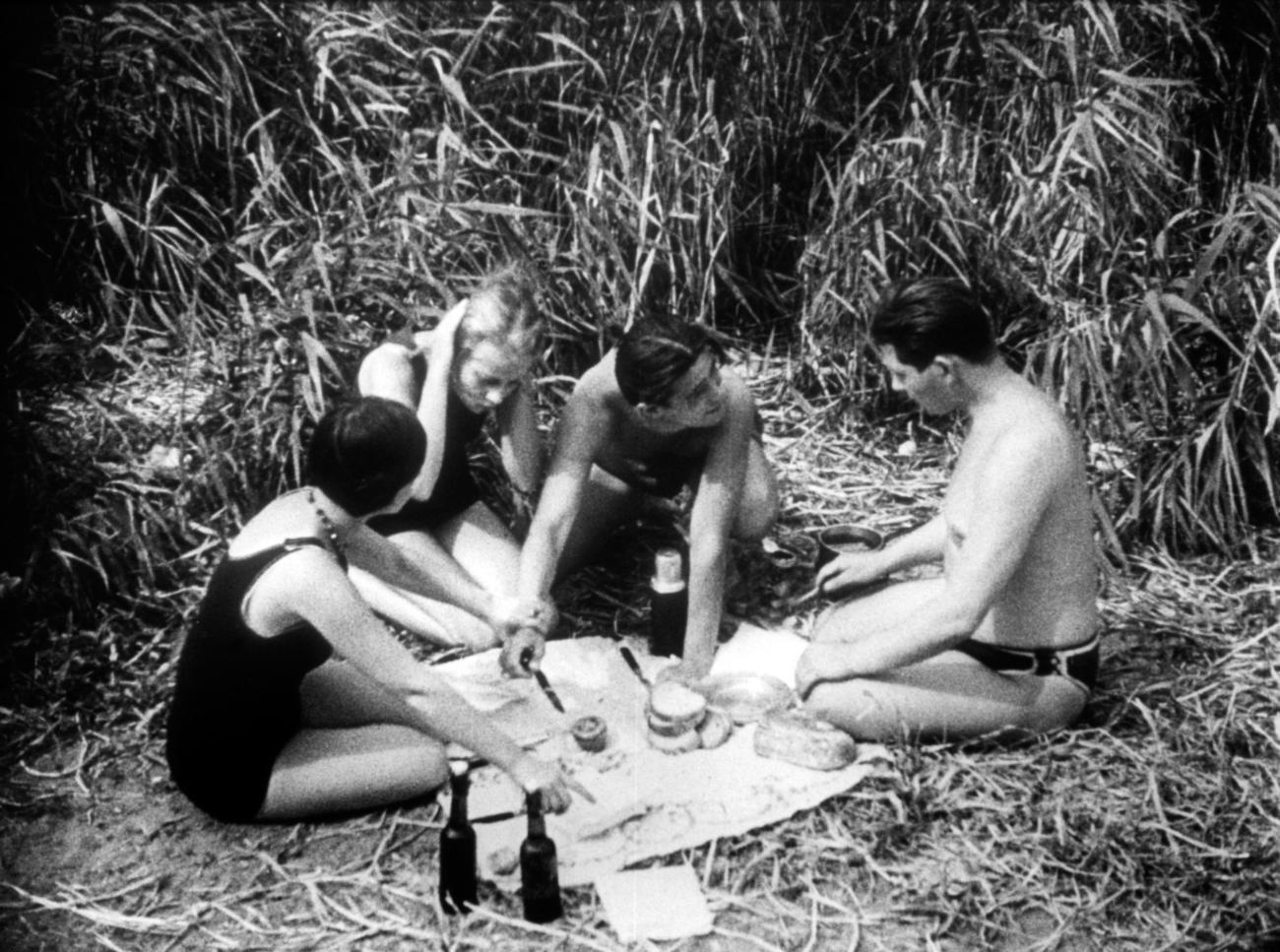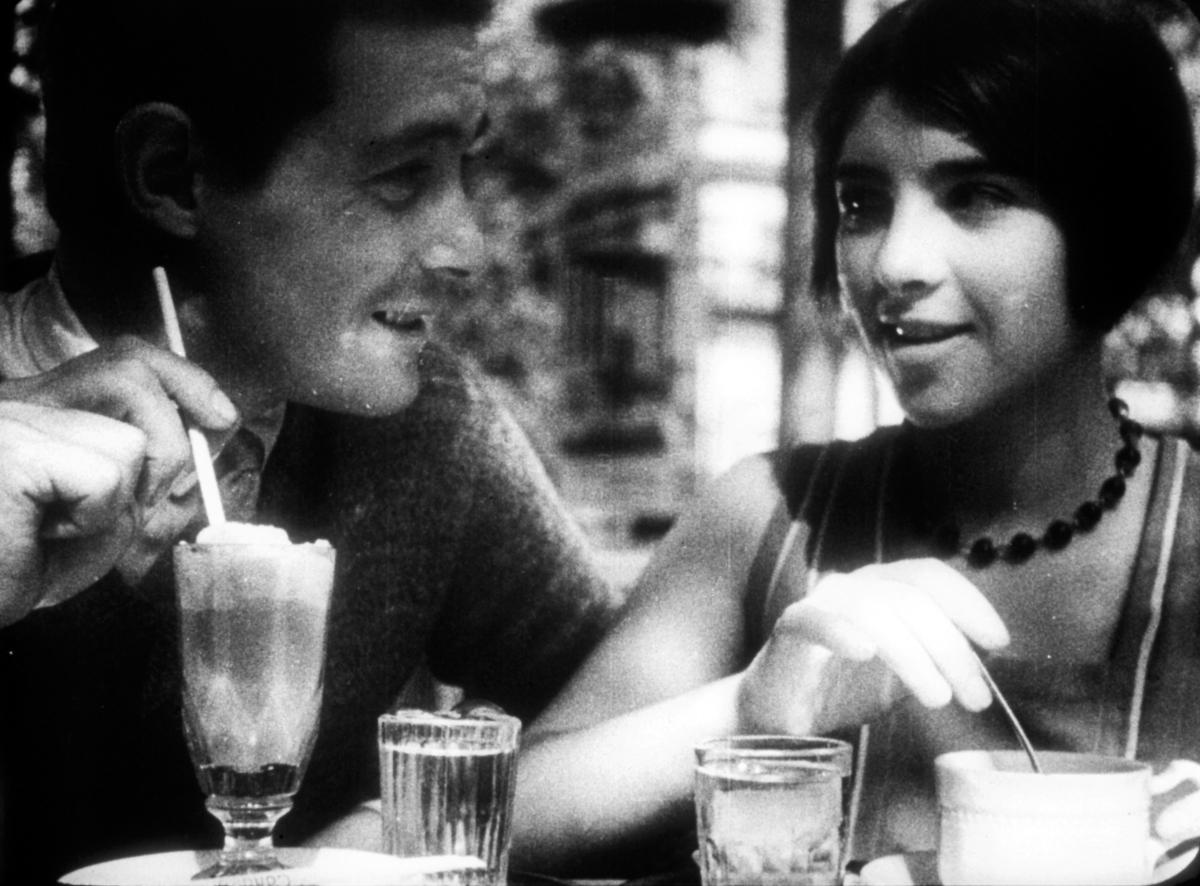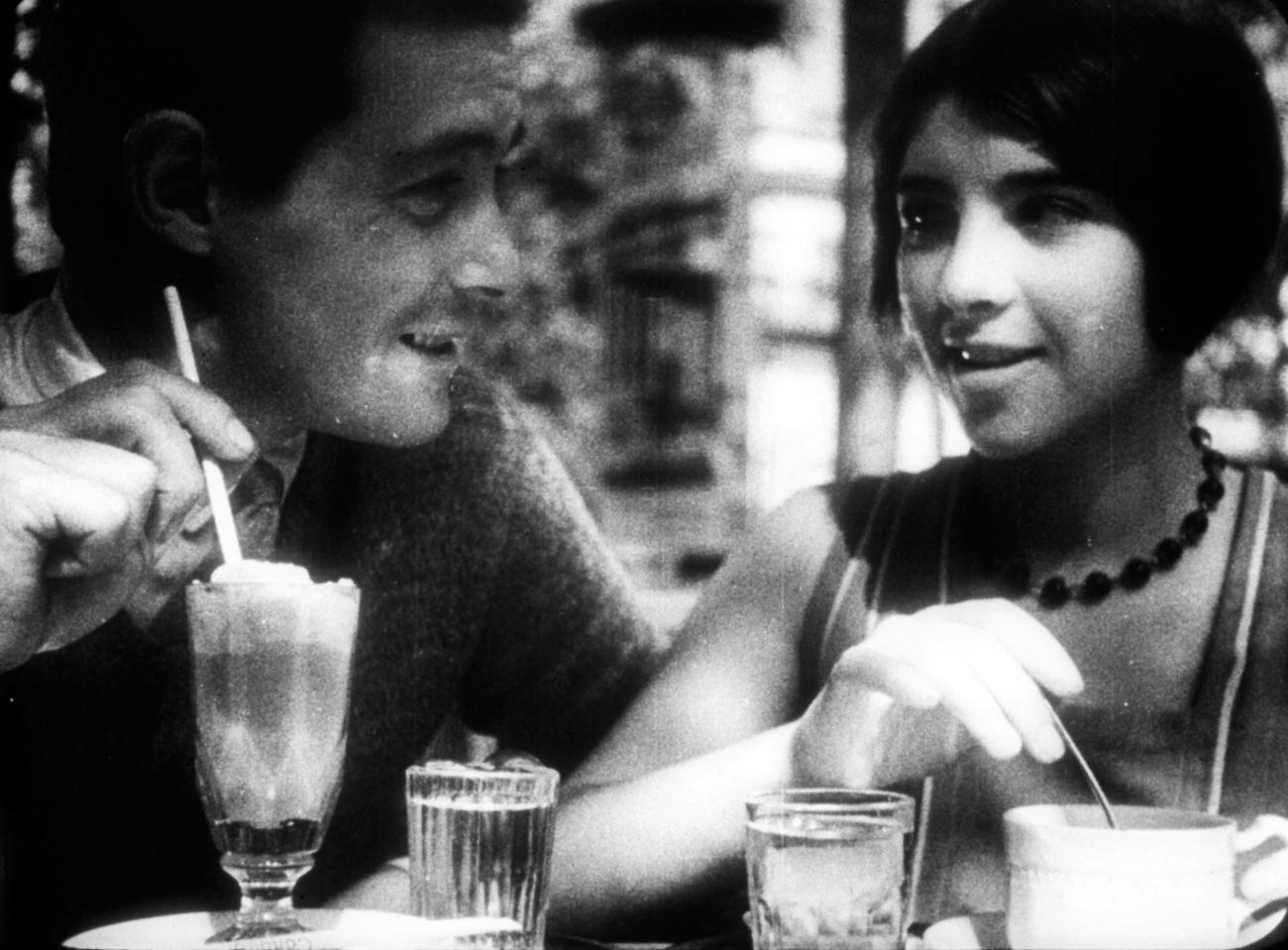Shooting on weekends, a team of young, Jewish filmmaker-wannabes in 1920s Berlin made a classic film—and launched several major Hollywood careers.
The motion picture’s dual appeal as both an art and a pastime is tied up in the camera's ability to capture reality at the same time that it conveys fiction. Movies are an enchanting admixture of unvarnished truth and comforting anecdote, or, to paraphrase Alfred Hitchcock, they can offer a slice of life and a slice of cake. This seems particularly true of the 1929 German independent film People on Sunday (Menschen am Sonntag). Shot on weekends, and on a shoestring budget, the film features five young Berliners essentially playing themselves. Its “plot” is gossamer thin, the action confined to a single day, roughly, and centered on a double-date outing to a park. The movie was a modest effort devised as a calling card for some would-be filmmakers with a rough-hewn aesthetic unlike anything coming out of Berlin’s prewar powerhouse film industry. Yet, in the history of film, it proved to be of major importance.
In his liner notes to the British Film Institute’s home video release of the film (the longest extant version; the DVD remains unavailable in North America), film historian Philip Kemp describes People on Sunday as, “fresh, light hearted, and remarkably forward looking, deftly anticipating several future revolutions in movie making technique.” Indeed, the film’s improvisatory, shot-on-location (except for one interior set) production, and clever blending of reality and fiction predates Jean Renoir's loosely scripted pastoral films Toniand Partie de Campagne; forties Hollywood experiments in location shooting; the work of Roberto Rossellini, Vittorio De Sica, Luchino Visconti, and others identified with the postwar Italian neo-realist school; Morris Engel’s revolutionary 1953 Brooklyn-set fable, Little Fugitive; and the boundary-pushing fifties and sixties films of the French New Wave.
And as described in the new documentary Cinema’s Exiles: From Hitler to Hollywood, People on Sunday bears other important legacies. The film was the product of a unique, once-in-a-lifetime collaboration among a half dozen young filmmakers who would go on to even greater individual glory. In the decades after making People on Sunday together, Billy Wilder, Robert Siodmak, Fred Zinnemann, Edgar Ulmer, Curt Siodmak, and Eugen Schüfftan would refine and redefine cinema on both sides of the Atlantic. But their sole collaboration created a film of unusual maturity that is both acutely of the moment and at the same time ageless, which is all the more remarkable since, for many of those involved in its production, People on Sunday was their first autonomous filmmaking experience.
Describing a similarly defining meeting of young musical minds in Memphis, Tennessee, some twenty-six years later, Memphis journalist Bob Johnson referred to the results of Elvis Presley, Jerry Lee Lewis, Carl Perkins, and Johnny Cash’s impromptu studio collaboration, in what became known as “The Million Dollar Quartet,” as “kind of like coming from the same womb.” In the case of two of the central creative architects of People on Sunday, that shared biological origin was literally the case.
Robert and Curt (né Kurt) Siodmak were born in 1900 and 1902, respectively, in Dresden. The Siodmaks lived comfortably off their furrier and inventor father’s considerable business success. But “my parents’ marriage wasn’t a happy one,” Curt recalled many years later in an interview in Patrick McGilligan’s second compendium of interviews with Hollywood screenwriters, Backstory 2. “Though we were brought up in our early life with governesses in an affluent surrounding, we were rebels and left the family at an early age.” Both Siodmak brothers harbored artistic ambitions. “I wanted to write novels and short stories,” Curt said. And Robert? “He wanted to direct.” They initially settled for journalism and acting, respectively, and relocated to Berlin around 1925.
The Berlin to which the Siodmak brothers traveled was Europe’s film capital. Created during WWI as a propaganda arm of the German government, Universum Film AG or UFA Studios (housed from 1926 on in the mammoth Neubabelsberg soundstage complex) became in the 1920s a creative crucible of considerable commercial force and global aesthetic influence. The studios’ storied Weimar-era cinematic achievements, from F. W. Murnau’s The Last Laugh to Fritz Lang’s Metropolis, are vast and varied. Drawn to the flame of UFA’s artistic supremacy, even with an uncle in the film business, the Siodmak brothers had trouble gaining entry to the dream factory. As far as writing and directing their own features were concerned, the gates to Neubabelsberg remained closed. And they weren’t the only ones locked out.
Born in what is now Poland in 1906, Samuel Wilder (nicknamed “Billie” by his mother, a handle that would be Americanized into “Billy” once he immigrated to the United States in the thirties) came to Berlin after an undistinguished attempt at higher education in Vienna. Work as a journalist (and at one point a professional dance partner) led to minor, mostly uncredited, successes as a screenwriter. Wilder needed a break. In lieu of commanding a cast and crew, like many would-be young Turks in Berlin’s thriving Weimar bohemia, Wilder regularly held court in the city’s lively bars and coffee houses. It was in one of these, the Romanisches Café, according to the rickety historical consensus of most of those involved, that the idea for People on Sunday was conceived.
Passing through the same social scene that included the Siodmak brothers and Wilder were Eugen Schüfftan and Edgar Ulmer. Both men had already distinguished themselves in below-the-line film production capacities. Schüfftan, at age 36 the oldest of the group, was a special-effects designer who had invented a process by which an angled semitransparent mirror was used to mate miniature sets with full-sized actors in a single exposure. He and Ulmer, age 25, an art director who had recently returned from Hollywood, where his work on Murnau’s Sunrise earned him the first ever credited designation of “production designer,” had both labored long and hard on the UFA “super production” Metropolis.
The 1920s were a period of unchecked aesthetic evolution for the motion picture. From Hollywood to Moscow filmmakers sought to imbue curb-level realism and detail into what was for the average nickelodeon habitué a medium for escapism. “I suppose the average fellow walks through life and sees quite a bit of drama taking place around him,” director King Vidor told producer Irving Thalberg when pitching his 1928 slice-of-life romance The Crowd. “Objectively life is like a battle, isn’t it?” The Crowd’s brooding, evocatively lit take on film shows the influence of German Kammerspiel dramas of Murnau, Phil Jutzi, and G.W. Pabst. Kammerspiel films, according to Lotte Eisner in her survey of German cinema, The Haunted Screen, all “display the same concern for documentary detail,” as “the camera scrutinizes the life of humble people and shoots the trivial incidents of the street from life.”
More abstract non-narrative “city symphonies” like Alberto Cavalcanti’s 1926 Rien que les heures, Walter Ruttmann’s 1927 Berlin Symphony of a Great City, and especially Dziga Vertov’s Man With a Movie Camera used highly imaginative photography and editing tempos to capture the same ecstatic energy that the Siodmaks, Wilder, and company had been feeding on since arriving in Berlin from the provinces. These films communicated sensation and mood with a maximum of visual ingenuity and a minimum of intertitles and melodramatic contrivance. And they did so on actual locations using natural light and non-actors. These pictures weren’t just honest and exciting to experience, they were cheap to produce.
“History,” Winston Churchill famously observed, “is written by the victors.” With twenty-one Oscar nominations, six non-honorary wins (including a hat trick for The Apartment in 1960) Billy Wilder, whose career ran from the twenties in Germany to the eighties in Hollywood, is by far the most quoted member of the People on Sunday brain trust. His description of the film’s conception, given to a leftist Berlin newspaper in 1930 and translated in Kevin Lally’s biography of the director, Wilder Times, begins with the violently positive reaction of a bystander overhearing the group’s discussion of their project in the Romanisches Café. “This thing has got to be made!” Wilder recalled hearing, as “a small man springs up from sitting position and bangs on the marble tabletop. The lemonade glasses shake. Moritz Seeler.”
By the time of this fateful, possibly apocryphal outburst, Dr. Moritz Seeler had founded the highly influential Junge Bühne theater group, which premiered plays by Bertolt Brecht and Arnold Bronnen. Though Seeler’s passion for cinema had led him to inaugurate a film-screening society, People on Sunday would be his first film-producing experience. The first of many hurdles he and the rest of the members of Filmstudio 29, as their short-lived collective was dubbed, encountered was how to pay for “the thing” to get made.
Curt Siodmak maintains that the first 5,000 marks of the 9,000-mark (roughly $2,500 US at the time) eventual total production cost of People on Sunday came from his own pocket. “I had sold my first serial novel to the Woche magazine, which paid very well,” he said. “I gave Robert an idea and 5,000 marks to start.” Robert Siodmak and Billy Wilder claimed that they borrowed the money from the Siodmaks’ uncle, producer Heinrich Nebenzhal. Edgar Ulmer (whom, it bears mentioning, has been called “film history’s biggest liar” by Lotte Eisner) insisted in an interview in Peter Bogdanovich’s Who the Devil Made It, that he set the film up with his own money. “I organized it,” Ulmer told Bogdanovich. “I had five thousand dollars which I had brought from America.”
Whatever the source of their initial funds, the team set about creating a scenario for the film and casting it. “I had an idea and the idea was very simple,” Curt Siodmak recalled. “The story is about a big city full of traffic, like New York or Berlin. A boy meets a pretty girl and makes a date to take her on Sunday to the Wannsee, which is a big lake near Berlin. He brings his best friend; she brings a girl prettier than she is. The first boy goes after the second girl.” Until shooting began, that was about as specific as the script got. Once principal photography commenced, everyone in the production team pitched in with ideas, scenes, and bits of business. Curt Siodmak shared writing credit with Wilder, but maintained that the actual incident and moments in the film were improvised and written on the fly. “I didn’t write it,” he said. “Nobody did.”
Nobody and everybody, it turns out. Cast member Brigitte Borchert recalled the long waits in a café near their location while “the gentlemen of the shooting team worked out the day’s scenes at the next table.” Curt Siodmak agreed. “We devised scenes [day by day] for the next day’s shooting,” he said. “Whatever we had in mind, we talked over.”
Borchert (a typist and shop girl whom Wilder claimed was initially forbidden to participate in the film by her parents who “took us for white slavers”) shared the screen with cabbie Erwin Splettstosser, sometime film extra Christl Ehlers, wine salesman and bon vivant Wolfgang von Walterschausen, and model Annie Schreyer. Each cast member was paid ten marks a day.
With almost no money and multiple world-class egos in the making on the same set, production was far from smooth. “It was out of the question to travel by automobile,” Fred Zinnemann wrote in his memoir, “we went to the location by bus and in the evening Billy and Siodmak took the exposed negative to the laboratory to be developed. One day they got into an argument and walked angrily off the bus, leaving the negative behind them—three days’ work which was never seen again and had to be reshot.” In addition, shooting was initially complicated by the presence of set designer Rochus Gliese, whom Seeler first tapped to helm the film. But clashes with Robert Siodmak drove Gliese from the team and the elder Siodmak quickly assumed the director’s role completely.
People on Sunday was intended to be completed in a matter of weeks. But weeks became months, and though the budget stayed slim, the film’s schedule ballooned. Several crew members were forced to exit by calendar constraints. Zinnemann, who dismisses his contributions to the film in Exiles as “simply carrying the camera around, loading the film, and keeping focus as best I could,” heeded a job offer from Hollywood and departed before principal photography was complete. Ulmer also appears to have returned to America before the shoot was over, and several accounts suggest that Seeler temporarily abandoned the project after quarrels with Robert Siodmak and Wilder. The cast members were even driven to strike in order to collect unpaid wages as their commitment dragged on. None of this acrimony is reflected on screen. The finished film is a marvel of frugal ingenuity, narrative thrift, and graceful visual invention.
The cut negative of People on Sunday, assembled in the editing room by Schüfftan and Robert Siodmak, has long since vanished. The International Federation of Film Archives database lists some thirteen different member archives with materials from the film in their collection. At 1,839 meters long, BFI’s restoration, which is composed of print materials from the Netherlands Film Museum, the Swiss Cinémathèque, the Royal Belgian Cinémathèque, and the Italian Cineteca, plus the film’s original intertitles as they were compulsorily recorded by the German censorship board prior to the film’s release, is likely the closest People on Sunday will ever get to its listed 2,014-meter length and approximately 74-minute running time.
But even in a version multiple generations away from the original camera negative, Schüfftan’s deep-focus black-and-white photography is lovely to behold. For the future globe-trotting cinematographer of such masterpieces of non-color filmmaking as Marcel Carné's 1938 Quai des brumes, Georges Franju’s 1960 Les Yeux sans Visage, and Robert Rossen’s 1961 The Hustler (for which Schüfftan won an Oscar), and 1964 Lilith the alternately sharp and diaphanous images in People on Sunday are almost an aesthetic manifesto. One sequence in particular involving amateur still photographers realized via freeze frames is eerily modern.
Like almost every other detail regarding the film’s authorship, just who contributed what remains a matter of conjecture. But the Wilder touch is clearly in evidence in People on Sunday. An exquisitely cynical beat in which the camera pans away from two lovers impulsively embracing for the first time to a nearby pile of garbage certainly seems like the work of the future mastermind of 1951’s Ace in the Hole, one of the most scathing and fatalistic looks at American life ever committed to film.
It’s telling that even though Ulmer received a codirector credit, in interview after interview no one on the production team accorded him that title except for Ulmer himself. Viewed in comparison with Ulmer’s future Poverty Row masterpieces like 1945’s Detour and 1955’s The Naked Dawn, and Robert Siodmak’s marvelously evocative and paradigmatic films noir, Phantom Lady, The Spiral Staircase, and Criss Cross, one is inclined to cede the lion’s share of the credit to Siodmak. Christl and Wolfgang’s initial meeting on the street, for instance, is a visually and emotionally rich union of low-angle tracking shots and high-angle third-person remove, intercut with passing subway trains. Like much of People on Sunday’s marvelously vivid composition, it evokes Siodmak’s considerable gifts for scene geography and complex crane shots more than Ulmer’s gothic, suffocating mise en scène and earthbound long takes.
“Robert Siodmak belongs to what they call here, in their best German, the ‘avant-garde’ school of picture directors,” noted an item in the March 15, 1931, edition of the New York Times. “A little over a year ago he took some young people and a film camera and made a picture of Berlin outdoor life; but he could find no one to show it.” Making People on Sunday available to the public and the UFA executives whom it was as much made for proved to be a challenge. To generate interest in the film, the Siodmak brothers turned to Berlin’s journalist community. With “the press, which always supports such enterprises,” the Times went on, “giving it a hearty boost, it ran merrily for several weeks on Kurfurstendamm, the amusement street of the metropolis.”
Though Brigitte Borchert maintained in a 1930 newspaper interview that her peers shunned the film in favor of more escapist material, People on Sunday’s theatrical engagement proved to be both a financial and professional success. After an initially cool reception from producers and distributors unprepared for the film’s departure from middle-brow cinematic orthodoxy, People on Sunday became the calling card it was created to be and secured both Curt and Robert Siodmak and Billy Wilder the work with UFA they sought.
For Moritz Seeler, the film proved to be an epitaph. Of all the film’s Jewish behind-the-camera talent, Seeler alone did not leave Germany. He was unable to escape Nazi persecution and died in the Oranienburg labor camp in 1942. As is vividly documented in Exiles, the Siodmaks, Wilder, Ulmer, Schüfftan, and Zinnemann were individually able to fulfill the enormous collective promise of People on Sunday, by leaving the city and the national film industry that inspired their gorgeous and influential collaboration.

